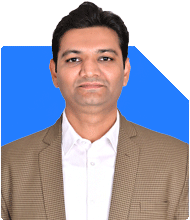Ramalingam Kalirajan |8227 Answers |Ask -Follow
Mutual Funds, Financial Planning Expert - Answered on May 27, 2024
He has an MBA in finance from the University of Madras and is a certified financial planner.
He is the director and chief financial planner at Holistic Investment, a Chennai-based firm that offers financial planning and wealth management advice.... more

I am 31 years and my wife is 28 years old. Together we have earning 1.8 lacks per month after taxes. We recently purchased home costing 85 lacks out of which 75 we opted as loan. We have ongoing car loan which having balance of 1.8 lacks now. I have SIP of 14k and emi of 82 including car and home loan. We are living rented house in Pune of 17k. How should we plan for our child education expenses along with retirement fund? I have 12 lacks as emergency fund out of which around 8 will be utilised for interior
You and your wife have a combined monthly income of Rs 1.8 lakhs after taxes. This is a solid foundation to build on.
You have recently purchased a home costing Rs 85 lakhs, with Rs 75 lakhs taken as a loan. You also have a car loan with a balance of Rs 1.8 lakhs. Your current monthly SIP is Rs 14,000, and your total EMIs for home and car loans are Rs 82,000.
Additionally, you are living in a rented house in Pune, paying Rs 17,000 per month. You have Rs 12 lakhs as an emergency fund, though Rs 8 lakhs will be used for home interiors.
Managing Your Home and Car Loans
Paying Rs 82,000 monthly for your loans is a significant expense. Prioritizing loan repayment can free up future cash flow.
Focus on reducing high-interest debt first, starting with your car loan. Once paid off, redirect these funds to other financial goals.
Adjusting Your Emergency Fund
Your emergency fund of Rs 12 lakhs will reduce to Rs 4 lakhs after home interior expenses. This is lower than the recommended 6-12 months of living expenses.
Aim to rebuild your emergency fund gradually. It provides a safety net for unforeseen circumstances.
Planning for Child Education Expenses
Start early to benefit from the power of compounding. Consider diversified investment options like child education plans or mutual funds.
Actively managed mutual funds can offer strategic growth tailored to education timelines.
Retirement Fund Planning
You need a balanced approach to build a retirement fund. Continue your SIPs but consider increasing contributions as your financial situation improves.
Explore actively managed funds for better risk-adjusted returns. These funds adapt to market changes, potentially offering higher growth.
Disadvantages of Index Funds and Direct Funds
Index funds simply track the market, lacking active management. They may not always align with your financial goals.
Direct funds require you to handle all decisions and transactions, which can be time-consuming and complex.
Benefits of Regular Funds with CFP Guidance
Regular funds managed by a Certified Financial Planner (CFP) provide expert advice and strategic planning. They can help manage your portfolio, ensuring it aligns with your goals and risk tolerance.
Diversifying Your Investments
Diversification helps manage risk. Balance your portfolio with a mix of asset classes, including equity, debt, and other instruments.
Consider large-cap and multi-cap funds for stability and growth. Actively managed funds can adjust strategies based on market conditions.
Regularly Reviewing and Adjusting Investments
Regularly review your investments to ensure they align with your goals. Rebalance your portfolio as needed to maintain the desired asset allocation.
Creating a Comprehensive Financial Plan
Work on a detailed financial plan covering short-term and long-term goals. Include debt repayment, emergency fund replenishment, child education, and retirement planning.
Conclusion
Your current financial discipline is commendable. To optimize your strategy:
Prioritize debt repayment, focusing on high-interest loans.
Rebuild your emergency fund to cover 6-12 months of expenses.
Increase SIP contributions as your financial situation improves.
Diversify your investments and consider actively managed funds.
Seek guidance from a CFP to ensure your portfolio aligns with your goals.
Best Regards,
K. Ramalingam, MBA, CFP,
Chief Financial Planner,
www.holisticinvestment.in
You may like to see similar questions and answers below
Ramalingam Kalirajan |8227 Answers |Ask -Follow
Mutual Funds, Financial Planning Expert - Answered on Jun 18, 2024
Jinal Mehta | Answer |Ask -Follow
Financial Planner - Answered on Jun 24, 2024
Ramalingam Kalirajan |8227 Answers |Ask -Follow
Mutual Funds, Financial Planning Expert - Answered on Jul 09, 2024
Ramalingam Kalirajan |8227 Answers |Ask -Follow
Mutual Funds, Financial Planning Expert - Answered on Jul 19, 2024
Vipul Bhavsar |57 Answers |Ask -Follow
Tax Expert - Answered on Apr 14, 2025
Vipul Bhavsar |57 Answers |Ask -Follow
Tax Expert - Answered on Apr 14, 2025
Dr Dipankar Dutta |1133 Answers |Ask -Follow
Tech Careers and Skill Development Expert - Answered on Apr 14, 2025
Vipul Bhavsar |57 Answers |Ask -Follow
Tax Expert - Answered on Apr 14, 2025
Dr Nagarajan Jsk |319 Answers |Ask -Follow
NEET, Medical, Pharmacy Careers - Answered on Apr 14, 2025
Dr Nagarajan Jsk |319 Answers |Ask -Follow
NEET, Medical, Pharmacy Careers - Answered on Apr 14, 2025
Prof Suvasish Mukhopadhyay |567 Answers |Ask -Follow
Career Counsellor - Answered on Apr 14, 2025
Prof Suvasish Mukhopadhyay |567 Answers |Ask -Follow
Career Counsellor - Answered on Apr 14, 2025
Prof Suvasish Mukhopadhyay |567 Answers |Ask -Follow
Career Counsellor - Answered on Apr 14, 2025
Prof Suvasish Mukhopadhyay |567 Answers |Ask -Follow
Career Counsellor - Answered on Apr 14, 2025























